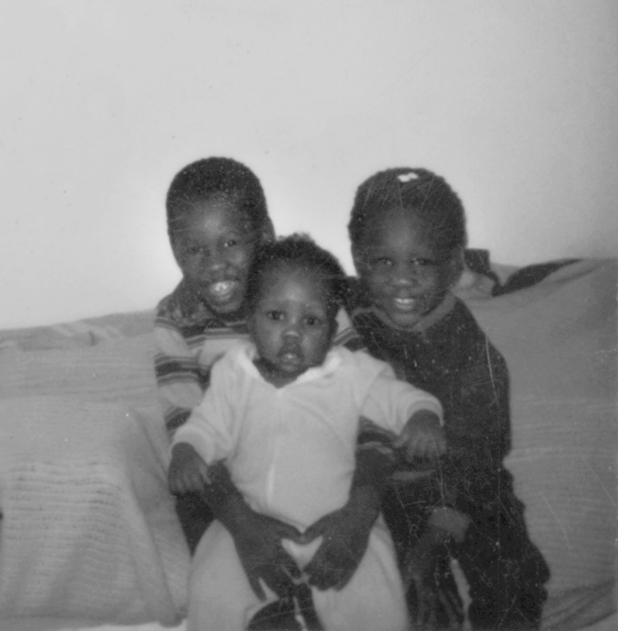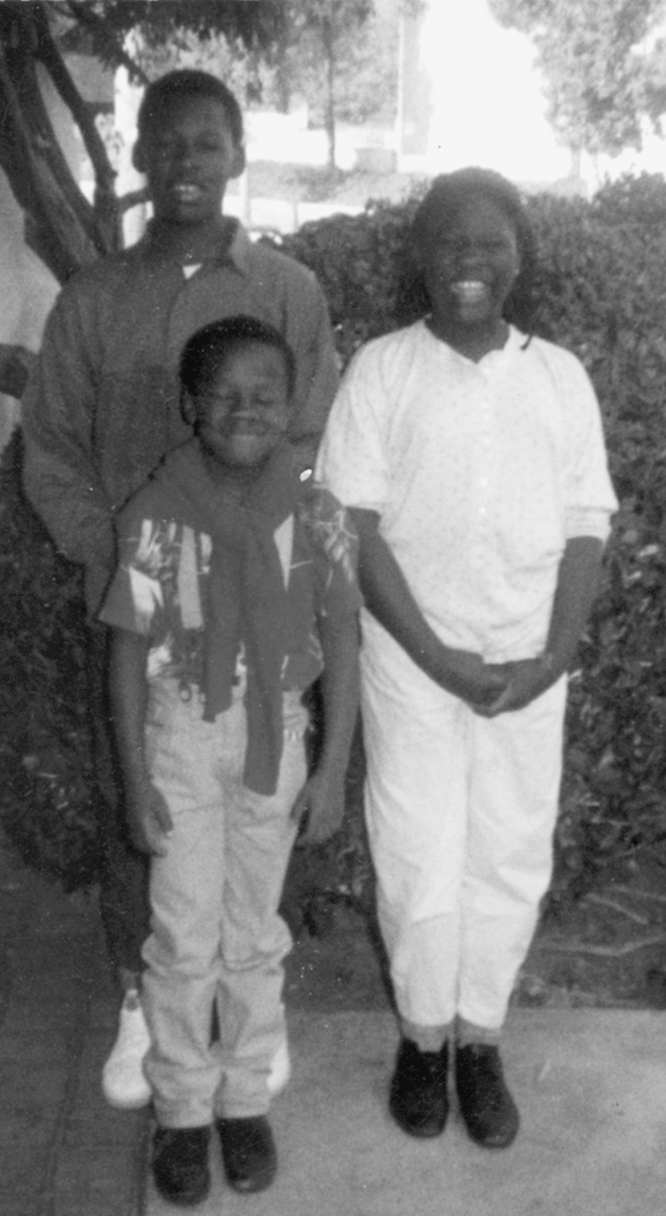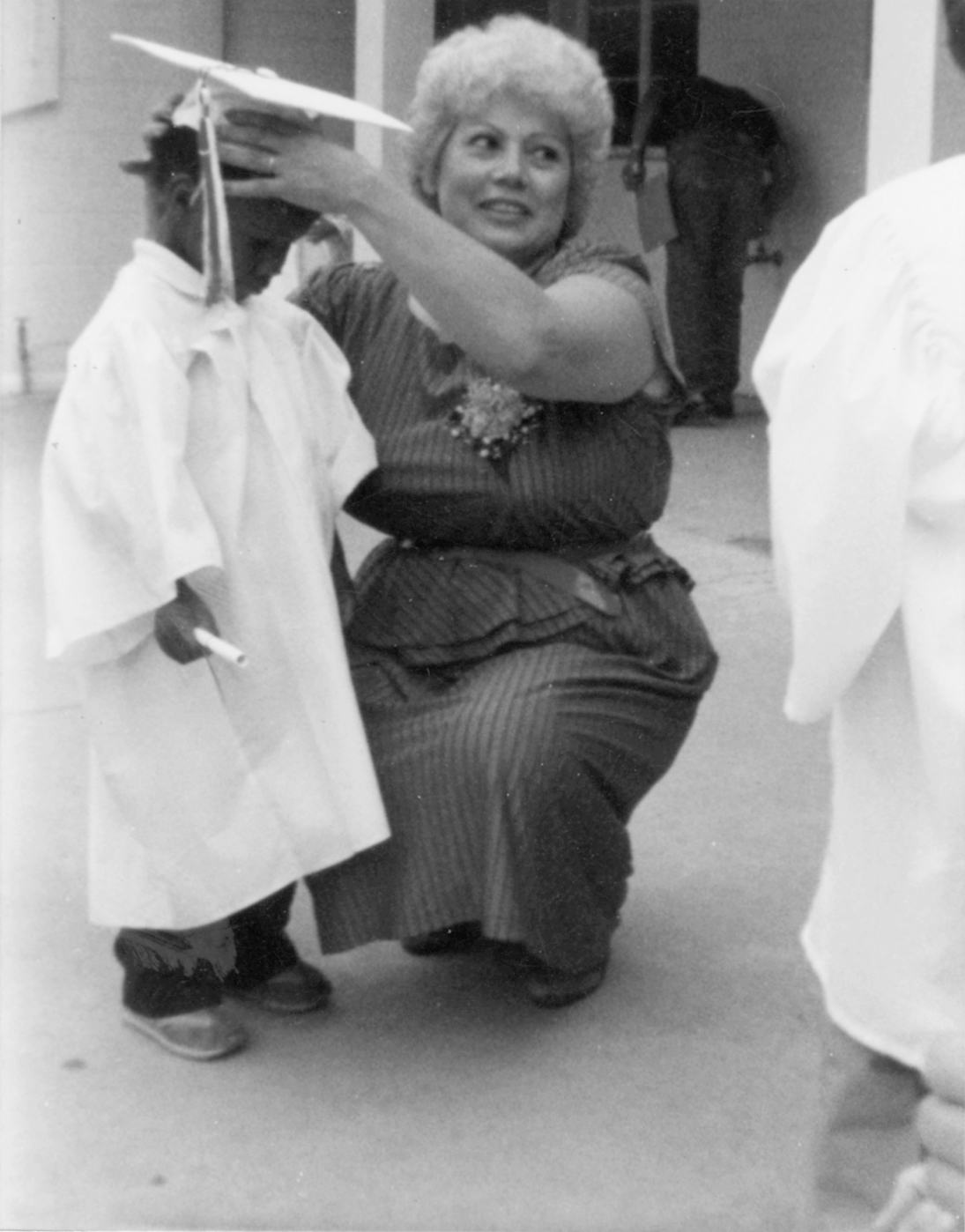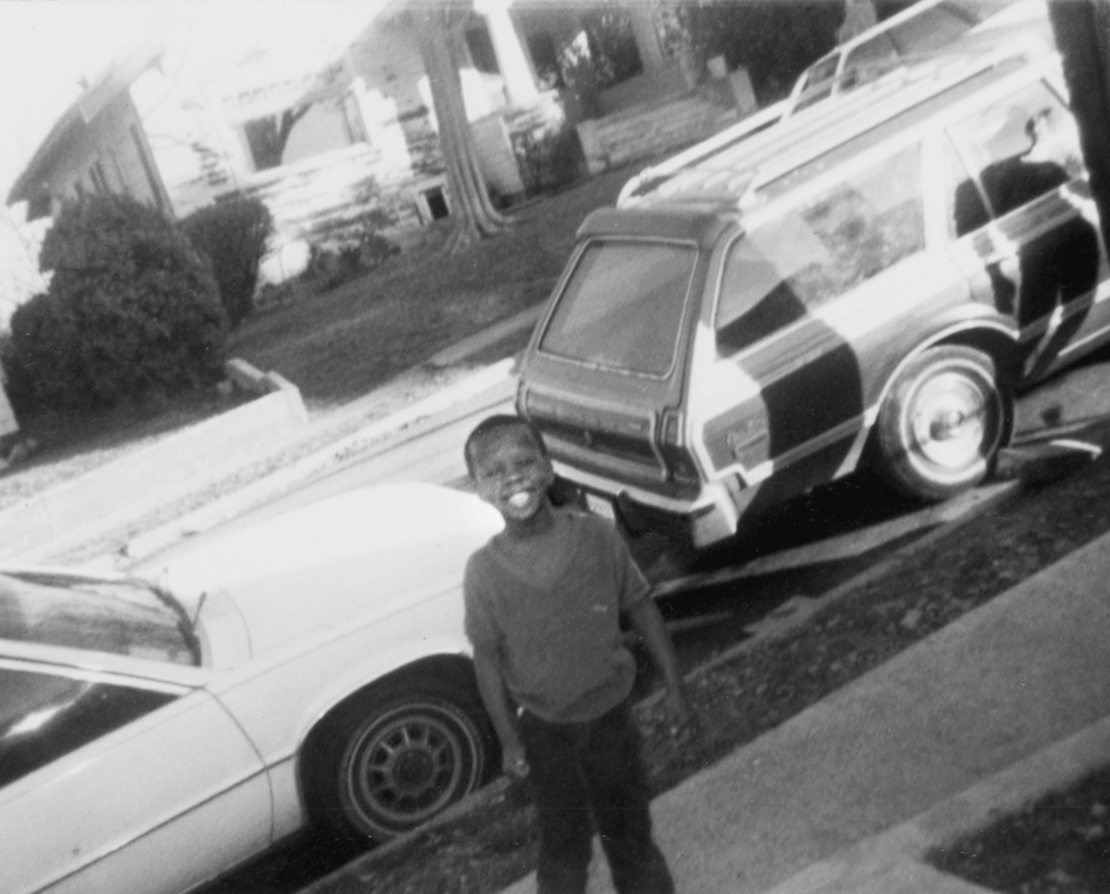
When Karen got her first certified nursing assistant job, she moved her young family to Normandie and 104th near Southwest Community College in Watts, a small quadrant of that Los Angeles neighborhood that, in fact, had had no looting, arson, or damage during the Watts riots fifteen years earlier. Michael was too young to remember the difficulty of his family’s first sojourn in a home of their own, as his mother woke him and his older brother and sister at 4 A.M. so that they could head to the babysitter on an exhaust-belching city bus, before Karen turned around and headed to a workplace that she didn’t reach until 7:15 A.M. To help South Los Angeles, bus fares had been reduced to 50 cents for three years, and Michael and his family joined waves of Angelenos who helped public transit in Los Angeles reach its modern peak in ridership.
Then at the end of the day, they reversed the trip. Karen recalls, “By the time we got home, and I bathed and fed the kids and then ate, drank, and passed out, it was time to do it all over again.” Michael wouldn’t have remembered his mother’s descent into drink in the months following his birth, but by July of 1980, she needed Alcoholics Anonymous. It was a quick descent but a dramatic and durable reversal. She has been sober since before Michael turned one.
At this point, Karen started a slow, hard-fought upward climb. In the year after she started AA, she got a new job, once again as a certified nursing assistant, this time at Harbor-UCLA Medical Center, where Michael had been born and where he would later be hospitalized for his gunshot wound. She graduated from the buses and acquired a little, used blue Datsun. She moved her family up to a little more space, at 103rd and Wilmington. The neighborhood had been one of the worst flashpoints during the civil unrest of 1965. Two people had died just down the street. When the local grocery store reopened, only women were allowed inside. But the neighborhood was also just around the corner from the Watts Towers, where there were art classes for children, and it had been a center of intellectual and artistic activism in the sixties and seventies.
To make getting a bigger place possible, Karen took on roommates. She also thought of the roommates as potential babysitters. “That was always the thing, trying to find childcare,” she recalls. She was always trying to make all the pieces fit, without quite enough material resources to make it happen, like trying to button a sweater over a pregnant belly. She remembers being struck, once, when someone asked her why she tried so hard when it was obvious she didn’t have the resources to hold it all together. She’d never stopped long enough to think about it, she realized.
Of course, the roommates, friends of friends or even near strangers, also brought complications. With one roommate, a gay man, she finally discovered that “he was having company while I was working, when he was supposed to be looking after the kids.” Yet Karen’s kids always had a place to sleep, clothes, at least one pair of shoes; and they never went hungry. When she had to, she would get her hands on food stamps, even if she had to lie.
Michael probably would have remembered this second home, where the family moved when he was about two. He always wanted to be outdoors and so would have remembered the neighborhood around it. He enjoyed the preschool in the apartment complex, tumbling about in shorts that showed his chubby thighs, even when it was cool enough that all the other kids wore pants. He would have remembered baking with his mom, and Thanksgivings and Christmases with all his uncles, aunts, and cousins.
This was how Karen’s kids got extras—holiday presents from family members. If Michael got toy cars, or a tricycle, or action figurines and Legos, it was usually because the extended family had piled up the Christmas tree at someone’s house and Karen and the kids came along. Together, over holidays, the group of California cousins that included Karen’s kids, my brother and me, and several other sets of cousins, all learned to eat giblets and sweet potato pie.
Sometimes J. P. and his third wife, Grace, even flew out from Florida, and J. P. would dress in the regal garb of an African prince for particularly special occasions. Inevitably, there were footraces in the street and football games on a front lawn, and college football on TV. Thanks to these gatherings, Karen never had to worry about laying in presents for her brood. She could count on Big Ros and her brothers to do that, while she focused on a roof, food, shoes.




CHILDHOOD
Yet even with this kind of support from family, parenting three young kids while working full-time was too much for Karen. In the early 1980s, she sent Roslyn for a couple of years to live with Big Ros. The result was that Roslyn felt her mother didn’t love her while Michael and Nicholas believed that, since she’d sent Roslyn some place nicer, she loved Roslyn more. Sometime in those years, when Michael was about four or five, a friend of his mother’s, Babi Tunde, taught him to meditate. This would become a lifelong practice, the only way he had to be still. From Michael’s early years, his mother would sometimes find him on the roof meditating.
Despite the emotional drama among the siblings, the downsizing was worth it. With this little bit of breathing room, Karen was finally able to start nursing school and head toward realizing her mother’s dreams. She enrolled in 1983 and graduated in 1984, when her three kids were eight, six, and four. I remember the barebones graduation ceremony, held in the gym of an area high school, rows of family on folding chairs as a group of mostly women walked across the stage. Now in seventh grade, I was proud of my aunt. Her struggles had been a constant refrain in my childhood, a basic harmony against which we lived out our lives as a family. Sometimes her phone was on; sometimes it was off. This month there was a bill she needed a little help with. Every now and then the electricity went off. When she hauled herself over the finish line of that nursing degree, I was as puffed up with pride as anyone in that little auditorium. I knew it had taken her a steel will to get there.
And that degree made a huge difference. Karen was able to step up to jobs at the next level. In 1986, when a friend’s cigarettes set fire to their apartment at 103rd and Wilmington, she was able to move her family not just into another apartment in Watts but out of Watts into a rented house in Highland Park, just southeast of Pasadena. Instead of treeless streets lined by walk-up apartment buildings, rows of bungalows defined this neighborhood, and there was plenty of grass and trees. This was the place the kids called home. They had decent schools. The neighborhood was multiethnic and the kids made friends up and down the street.


KINDERGARTEN GRADUATION
Karen and the kids lived in a house, a little dark brown three-bedroom California cottage, with a crawl space beneath it. Now Michael didn’t just wander up to the roof to meditate but also into the crawl space. Or he climbed the trees outside. He made a lot of friends. Robin, Pauline, and Francis. Robert who lived next door. The kids in the anti-abortion family across the street.
And then he ventured out upon a boy’s adventures. Playing with matches one day, he set fire to a rug in a neighbor’s house, and he tormented his sister by playing with electrical cords. He cut the TV cord in order to show her a magic trick. He would show her how he could turn the TV on and off by re-connecting or separating the two ends of the cut cord. When he did bad, and sometimes even when he hadn’t but when his mother thought he had, she would smack him. On the head, the legs, the arms.
So there were difficulties, but good things, too.
In Highland Park, the rites of passage proceeded according to plan. Michael’s beautiful kindergarten teacher, the one with the blond Afro, loved him. He graduated in high style in a white cap and gown. He had gymnastic lessons and played Little League and went to summer camp. To raise the funds for camp, he sold peanuts, so successfully even that he funded his brother and sister’s trips to camp, too. The trio would go for three-week stints in the summer. Then they would come home. Their mother would do their laundry, and then she would send them off again. They always went together.
Michael also had a glorious bicycle, a He-Man bike, that he loved, and their house was on top of a hill. He would fly down it barefoot, not yet able to brake, ending up at least once with a swollen eye with the bike all bent out of shape, having terrified his sister, cousins, mother, anyone who was around.
His sister, who was growing into a large-bodied girl and had already developed a mothering instinct, would cry out, “Michael, why don’t you put no shoes on!” We visited them often at this house. Once a month from sixth to eighth grade, I would come by so Big Ros’s girlfriend could relax my hair.

MICHAEL ON THE HILLSIDE SIDEWALK WHERE HE
CRASHED HIS BIKE
The only slightly unusual ritual in Michael’s life at the time was Ala-Tots. Since he couldn’t have remembered his mother’s drinking, his enrollment in the program must have seemed mysterious. Karen’s spirit lightens when she talks about their time in Highland Park and how amusing it was to eavesdrop on the kids’ Saturday morning Ala-Tot meetings. The trio would gather outside her bedroom door, whispering up a cloud of buzzing bees. They were whispering out their grievances which, she presumed, were mainly about her. They were a united front, and in this small house all four of them had five years they are glad to remember.
These same years were bad ones, though, for the City of Angels. No one can precisely date the invention of crack cocaine, but call it 1979 or 1980. It was around then. This highly addictive poor man’s version of the rich man’s high brought an upswing both in addiction and in the violence that went along with illegal trafficking. The onset of the crack epidemic is generally dated to 1983, the year that Karen entered nursing school. With its arrival, the intertwining of street gangs and drug traffickers accelerated, a deadly double helix. Between 1983 and 1985, cocaine sales involving gang members increased from 9 percent to 25 percent of the total traffic. In other words, gangs in the early eighties did not dominate the L.A. cocaine market, but their degree of involvement would increase throughout the decade. To the degree that street gangs did participate in the drug business, they brought younger participants and more African Americans into the game. Along with the new link between the drug business and gangs came a surge in gang-related violence. In Los Angeles, “the [annual] number of gang related homicides went from 212 in 1983 to 800 by 1992.” The drug business fueled a transformation of gangs that had once been mainly about juvenile delinquency into something far more violent.
Karen moved her family to Highland Park because she thought it was safer than Los Angeles, but by 1983, the invisible world beneath Los Angeles’ surface, where you “either jacked for money or you sold dope” and where “working was considered weak,” had begun to seep eastward. “Revenue,” as it was called, was changing the landscape of the gangs.
Roslyn remembers walking to church one Sunday when a group of boys with crowbars jumped out of a car and ran toward them. “Sis, run!” her brother, Nicholas, shouted as he dove under a car to hide. Roslyn ran all the way to church.
This is how Karen and Roslyn learned that Nicholas, now thirteen, had started gangbanging in Highland Park.